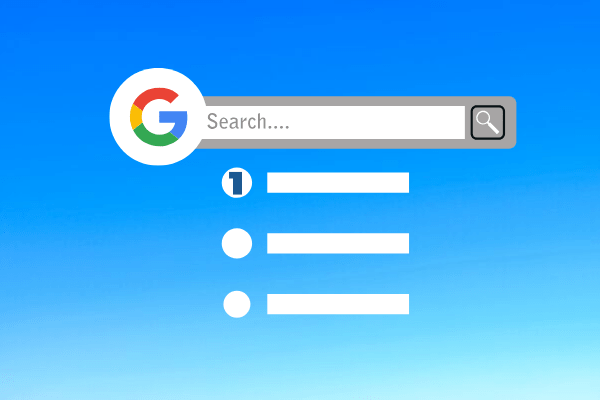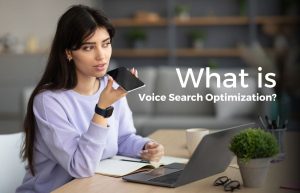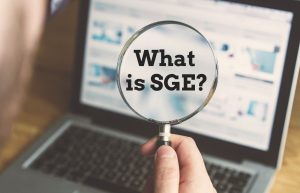When it comes to Google search results, being on the first page is key. According to Neil Patel, New York Times bestselling author and leading online marketer, 75% of people never visit the second page of a Google search. If you want to be seen online, you might want to learn how to appear on the front page of Google
You probably belong to that big percentage of people – if you can’t find what you want on the first page, you probably just try a new search and don’t bother clicking through the other pages. This is why ensuring that your products, services, and information show up on the first page of results is so crucial.
It might sound intimidating for a small or medium-sized business to make its way through the top results of a Google search, especially when the website is brand-new and battling more established webpages. Despite the heavy competition with other businesses in the same industry, there are several strategies you can use to help your pages climb to the top of the search results and appear on the first page of Google.
First, let’s talk about how Google recognizes and displays websites.
Google has an automated computer system working 24/7 that checks websites all over the internet. They take snapshots of each page and file them in a massive database. As Google’s system takes a snapshot, it automatically reads every word and other content on the web page (photos, videos, audio files) to identify the specific subject matter of each page.
With the use of this collected data, Google’s algorithms dynamically determine which webpages on the internet are the most relevant for a specific keyword or key phrase. It then displays them in a particular order on the results pages whenever people search for relevant keywords on Google.
So how can you appear on the first page of results for a specific Google search?
There are three main areas of Google’s search results you can rank #1 for: snippets, PPC ads, and local map listings.
Let’s learn about these three different ways to get your business to appear on the front page
1. Featured Snippets
Featured snippets are selected search results that appear as a block of text. They usually appear on the top of the organic results page. Google featured snippets often contain information answering a user query. This offers great site and brand exposure and potential traffic.
There are three types of featured snippets:
- Paragraph
This type of snippet answers the questions such as who, what, when, and why.

- List
This snippet is a bulleted or numbered list, usually in the form of instructions, that answers how-to types of questions.

- Table
A table snippet appears for posts that show numbers and data such as prices, dates, and other numerical data.

Businesses are not taking advantage of featured snippets enough. It’s a great way to get organic traffic without spending a dime on ads. It is also optimized for voice search which is great. The growing presence of voice-controlled assistants such as Siri and Google Assistant will bring more traffic to your snippet.
Last but not least, you automatically set yourself as an expert in the niche you’re in which is a hard thing to do especially for newer businesses. That’s why it is a great way to hit two birds with one stone.
How to Appear In a Featured Snipped
Conducting keyword research is the first step to increase your chances of appearing in a snippet. The “People also ask” section is also a helpful way to check out the related keywords often searched for by users. Learn how to create content based on those queries and expand on the topic further. When writing a blog, answer those queries at the beginning of the article so people are more likely to stay on your page and continue reading. Answer as many relevant questions as you can in a blog. This way you are increasing your chance of appearing in a Featured Snippet and appear on the front page of Google.
2. Local Listings
Search engines are becoming smarter. Paying your way to the top of the Search Engine Results Pages(SERPs) is not the only way to rank on the first page anymore. But that doesn’t mean that it has become harder to appear on the first page of Google. There are still a lot of ways to get listed organically. Getting into local listings is one way.
Google My Business
Google does it best to tailor search results based on your location. A local listing is one strategy to improve your online presence. It will give searchers basic details such as an address, business hours, and contact details. This will allow you to easily reach out to potential customers who are in the same area as you are. It is a good way to start doing SEO and improve your chances and appear on the front page of Google.

Google My Business is a free tool that allows you to manage these details on the Google search engine. If you’re just starting with SEO, begin with a Google My Business listing. It is a great way to start improving your organic traffic.
Setting it up is as easy as creating an account and verifying your business. You will have to optimize your listing by adding all the important information your customers will want and need to know. GMB also lets customers leave reviews and allow you to respond to them publicly.
To maximize your Google My Business listing, keep your details accurate and up-to-date. Choose a specific area or niche and represent your business with consistent branding and make sure to include details such as your open hours, phone number, and address are always up-to-date.
3. Paid Search Listing
SEO’s goal is to get on top of SERPs without spending thousands on advertising costs. However, a PPC (pay-per-click) campaign will always remain as one of the best ways to appear on the front page of Google.
A PPC campaign works along with an SEO strategy. Although PPC ads can guarantee your appearance on the first page of Google for certain keywords, it’s important to also work on SEO concurrently. This will help you avoid spending large sums of money on PPC ads.
Running A PPC Campaign with Google Ads
Formerly known as Google AdWords, Google Ads is the most popular PPC system out there. It allows businesses to create ads that will appear on the search engine. It can also create ads for other Google properties such as YouTube.
Google’s pay-per-click model outlines the process in which users bid on keywords. You will then pay for each click they get on advertisements and works around other factors such as keyword relevance and the quality of your landing pages. Google’s rating of your entire ad including its creativity is also a factor.
These are the basic factors to consider before creating an ad with Google:
- Campaign Type
Once you create a Google Ads account, you’ll discover that there are different types of ads to choose from. If you want to appear on the first page of Google, you should create campaign on the Google Search Network.
- Keywords
Choose the most relevant keywords or key phrases that your target audience will likely use.
- Audience
Narrow your target audience based on your marketing goals. This will improve the performance of your ad through delivery of the right message to the right people.
- Budget
Assign a daily budget through Google Ads to prevent overspending.
- Ad Delivery
Decide whether you want the ads to appear during specific times, such as your office hours, or rotate indefinitely throughout the day or week.
- Extensions
Ad extensions can help include additional information that will allow more users to find their way around your website. Some examples are call and location extensions which will allow users to easily call you or find you through maps.
Managing PPC Ads
It doesn’t end by successfully running an ad. You will have to manage your PPC campaigns. Make sure that they stay effective and relevant. Consistently make the necessary adjustments to your ads by analyzing your performance. That way, you will not waste money for every campaign and get the chance to appear on the front page of Google.
Learn your way around Google Ads. The site offers free online training and demos. It will also allow you or your team to be certified with the tool but ensure that you stay knowledgeable in it. Investing in PPC might be out of your usual budget. However, it is still a cost-effective way to kick off some traffic into your website and boost impressions.
Ready To See Your Business On The Front Page of Google?
Like any marketing strategy, getting your business to appear on Google’s first page takes time. A combination of these strategies and consistent monitoring and tracking of your performance will soon get you on top of those pages and drive traffic to your site. If you’re eager to learn more, the Boost Media Group has a team of SEO and PPC specialists to guide you in mapping out a plan to get you on the front page! Let us know more and we’ll be happy to help you.
Frequently Asked Questions
What are the ways to get on the first page of Google?
You can appear on the first page through featured snippets, local listings, or paid ads (PPC).
How can I get into a Google featured snippet?
Do keyword research, answer common questions at the start of your content, and use lists or tables to organize answers.
What is Google My Business, and how does it help?
Google My Business is a free tool to manage your business info on Google, improving local visibility and helping nearby customers find you.
What is PPC advertising, and how does it work?
PPC ads are paid ads that show up on Google. You pay when someone clicks your ad, and you bid on keywords to appear in search results.
How do I manage a PPC campaign?
Regularly check your campaign’s performance, make necessary changes, and use Google Ads tools to keep your ads relevant and effective.




